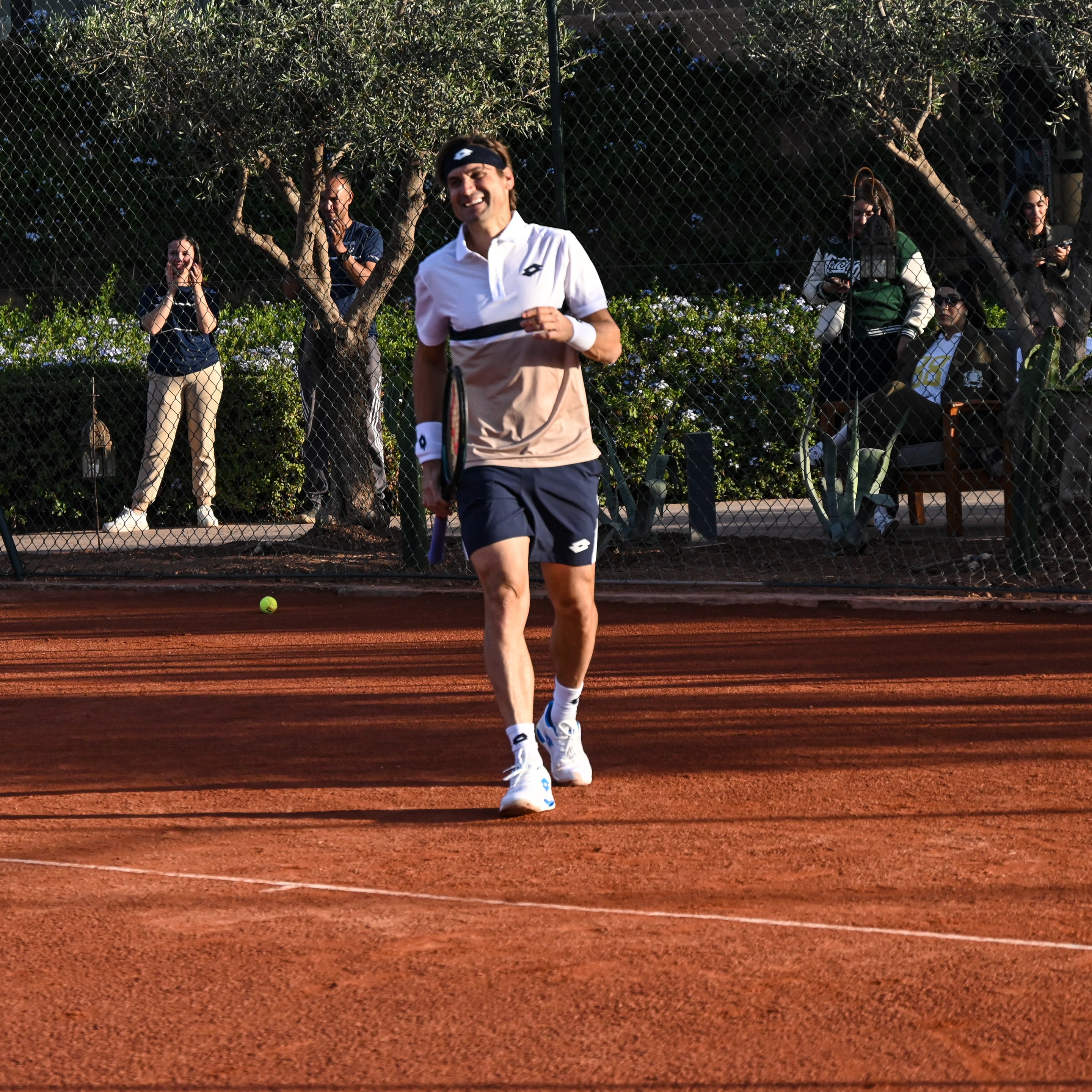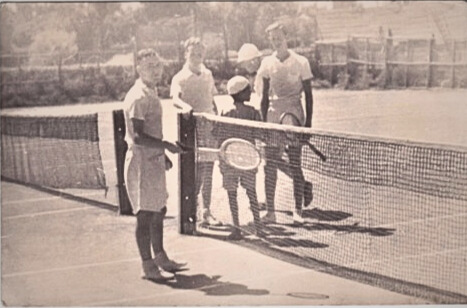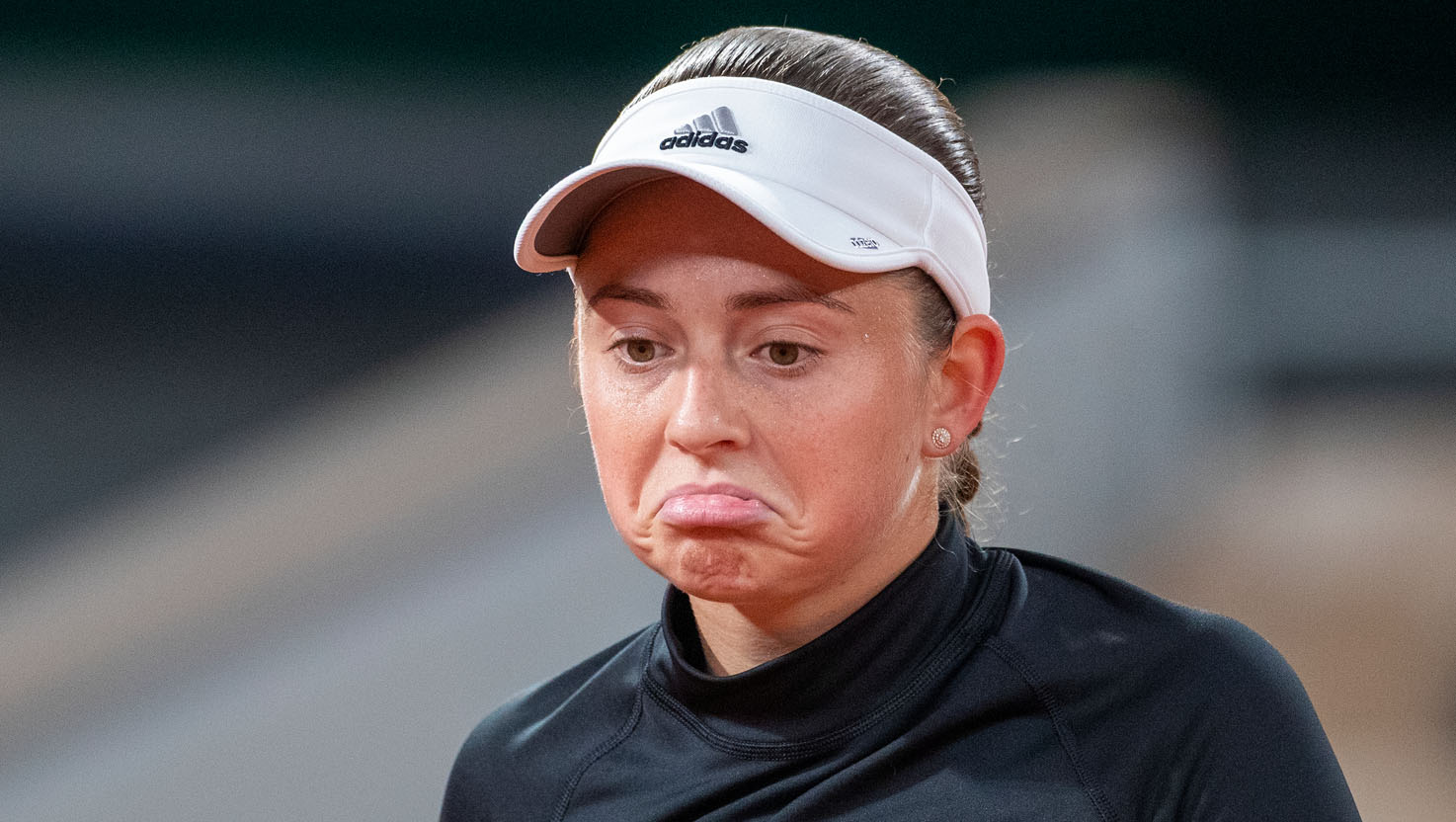Tennis on TV Needs Help.
By Gerald Marzorati
Photographs of tennis on his television screen by Rodrigo Corral
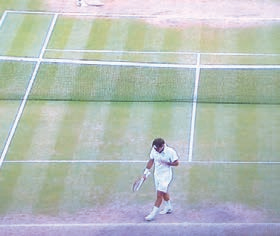
Did you happen to see that point— from the point of view of a tiny camera affixed to one side of the net cord, dead center—that Roger Federer took from Nick Kyrgios in Prague, during their stirring Laver Cup finale? Google it. It’s a replay for the ages, for the coming ages of televised tennis, I hope. Fed serves out wide in the deuce court; is forced to take a deep return as a half volley just inside the baseline; bolts forward and strikes a backhand volley at the service line; then, continuing to net, finishes the point with an impossible forehand reflex volley. You get it all, at least from Fed’s side of the net, thanks to the net cam: the spins and speed, the mechanics and instincts, that make elite tennis elite tennis. It’s the tennis that TV has never quite been able to capture and convey.
When we talk about tennis and TV these days, we tend to talk mostly about how hard it is to find the matches we want to watch. There was the WTA delaying (and delaying) the launch of its streaming service. There was the WTA taking its overseas tournaments from Tennis Channel to beIN Sports, a spinoff of Al Jazeera Media Network, which is in many, many fewer American homes (I get it as part of an $89.95 “Ultimate HD” package from Fios) than Tennis Channel, and which also is inclined to cut off matches before they’re completed and switch to European soccer, which is beIN Sports’ go-to game. ESPN, which now provides full coverage of three of the four majors along with Indian Wells, Miami, the US Open series in August, and the end-of-the-year ATP Finals, bounces its coverage among its channels, at times mid-match. Of course, these are all cable networks that, in one way or another, you wind up paying for. You’ll pay for streaming, too, if you aren’t already. Precisely one tennis tournament is broadcast (in part) live: the French Open, on NBC. We are a long, long way from Bud Collins, Dick Enberg, and the Tennis Boom.
All sports have seen their U.S. viewership shrink and fragment. There are so many platforms, and, seemingly, so little time. But I think it’s safe to say that other sports have been more daring in searching for ways to make their games and their “video content” (sorry) more appealing and absorbing to those who can’t be there. It’s just not enough to have switched from white balls to yellow ones. Which is why last year’s experiments at the US Open, the Laver Cup, and then at the Next Gen Finals in Milan—experiments aimed for the most part at changing up the screen-viewer experience—were so welcome.
Figuring out new and workable camera angles would entice and enhance, for sure. (Think baseball and football.) No sport fully transfers to a screen, and no sport ever will. But the limited space around a tennis court, already peopled with ball kids and line judges, leaves no room for arrayed cameramen. That’s why the development of remote cameras, like the sky cam already in certain tennis arenas and the net cam tested at the Laver Cup, is crucial. ESPN tried out a new camera unit in the Grandstand at this year’s US Open. The size of a narrow cabinet, it was positioned courtside behind the baseline and controlled by a remote technician who could instantly offer up sharp, super-slow-motion replays: frontrow cam. At the Next Gen Finals, there were replays from roughly the same angle shown at actual speed, and suddenly you were glimpsing how fevered and fierce a baseline rally is.
There were also tests of scoring and format changes at the Laver Cup and Next Gen events aimed at speeding things up—a move almost all sports are undertaking to grab and hold twitchy young viewers who live a quick click away from everything. A few of the changes struck me as worth trying out more widely, perhaps at several ATP 500 series and WTA premier tournaments. The 25-second countdown clock between points worked well at the Next Gen Finals: I didn’t see a single player rushing his serve, and the chair umpires were careful to pause after long rallies before starting the clock up. Playing a first-to10-by-two super-tiebreak, instead of a third set, in the singles matches at the Laver Cup both shortened the matches and heightened the suspense. It’s already used in both men’s and women’s doubles, except at Grand Slams. The same holds for no-ad scoring, which eliminates deuce. It saved time, of course, but also colored the matches at the Next Gen in an intriguing way I hadn’t anticipated. The biggest advantage didn’t appear to go to either the server or the returner but rather, in the moment, to the calmer player of the two.
These sorts of changes will take years to be introduced, if they ever are. But here’s one that upends no tradition, requires no rule changes, and would meet millennial sports viewers where they live. Tennis needs one great, digital, start-the-day home for men’s and women’s video highlights. You’re an NBA fan, and nba.com provides you with a few minutes of crisp, curated takes, accompanied by an informed and good-company voiceover, on the previous night’s scores and top 10 plays, along with a preview of the day’s upcoming games. Tennis? The ATP and WTA sites have neither much style nor savvy. And what fan is a fan only of the men’s or women’s game? Note to Amazon Prime, which streamed the Next Gen Finals: Own this.
The US Open this year had IBM’s Watson combing thousands of points each day for highlights, picking up on crowd ooohs, commentator exclamations, and player fist pumps to make its selections and post them to Facebook and the Open’s own app. Cool. But AI alone isn’t going to bring televised tennis into our moment. That’s going to take a little vision, and a big leap or two.
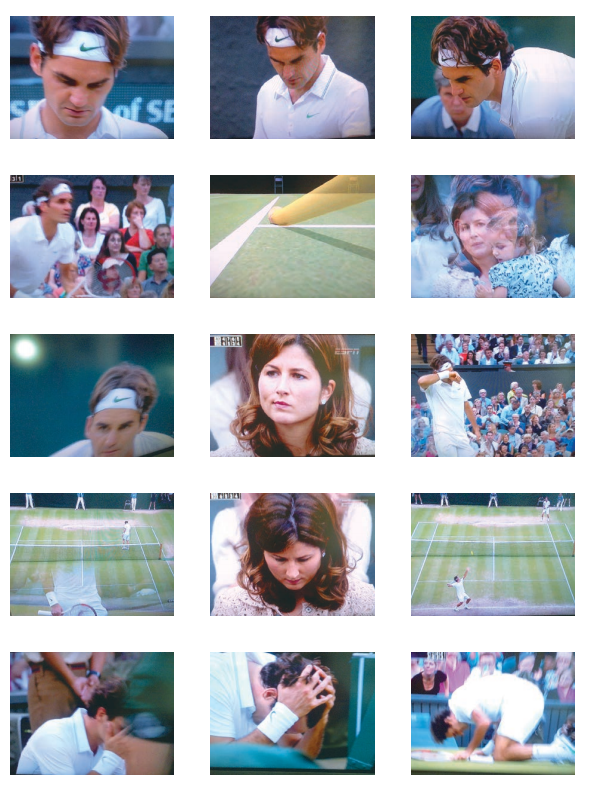
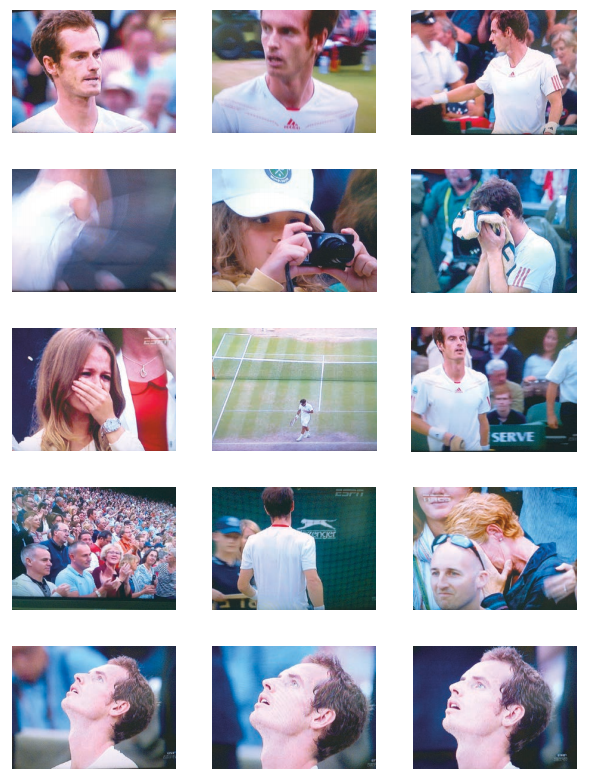


Gerald Marzorati is the author of Late to the Ball, a memoir about tennis and aging. He writes about tennis regularly for The New Yorker’s website.
Rodrigo Corral is the creative director for Farrar, Straus & Giroux and creative director at large for New Directions. His studio creates conceptual design and art for print, brands, interiors, and film. His latest book is Sneakers, with Alex French and Howe Kahn.
Featured in Racquet Issue No. 6



